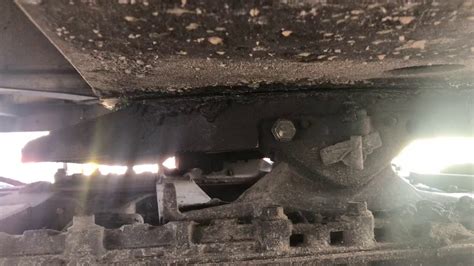Fontaine Fifth Wheel: Master the Art of Adjustment
Fifth-wheel hitches are crucial for the safe and efficient operation of any semi-truck and trailer combination. The Fontaine fifth wheel, a highly respected name in the industry, demands proper adjustment for optimal performance and longevity. Improper adjustment can lead to costly repairs, safety hazards, and significant downtime. This comprehensive guide will walk you through the essential aspects of Fontaine fifth wheel adjustment, ensuring you master this critical skill.
Understanding the Fontaine Fifth Wheel's Components
Before diving into adjustments, let's understand the key components of a typical Fontaine fifth wheel:
- Head: The upper portion that mounts to the truck's chassis. This houses the locking mechanism and the sliding plate.
- Baseplate: The lower portion that interfaces with the trailer's kingpin.
- Kingpin: The central pin on the trailer that fits into the fifth wheel.
- Locking Mechanism: Secures the trailer to the truck. Fontaine utilizes various locking mechanisms, so familiarity with your specific model is key.
- Sliding Plate (or Release Plate): Allows for easy connection and disconnection of the trailer.
- Adjusting Screws: Used to fine-tune the fifth wheel's position and ensure proper engagement with the kingpin.
How to Properly Adjust a Fontaine Fifth Wheel
The precise adjustment procedure varies slightly depending on the specific Fontaine fifth wheel model. However, the general principles remain consistent:
1. Visual Inspection: Before any adjustments, perform a thorough visual inspection. Check for any signs of damage, wear, or loose components. Pay close attention to the locking mechanism, sliding plate, and adjusting screws.
2. Checking for proper Kingpin Engagement: Ensure the kingpin is fully seated in the fifth wheel's head. A loose or misaligned kingpin is a major safety hazard and a common source of problems.
3. Adjusting the Lateral Position: This adjustment centers the trailer on the truck. Use the appropriate adjusting screws (often located on the baseplate) to fine-tune the lateral position. Slight adjustments are typically sufficient; avoid over-tightening.
4. Adjusting the Vertical Position: This ensures proper weight distribution and prevents excessive stress on the components. The vertical position is usually adjusted using screws located on the head or baseplate. Consult your fifth wheel's manual for the exact location and adjustment procedures.
5. Lubrication: Regularly lubricate all moving parts, including the locking mechanism and sliding plate, with the recommended lubricant. This prevents wear and tear and ensures smooth operation.
Troubleshooting Common Fontaine Fifth Wheel Issues
H2: My trailer is swaying excessively. What could be wrong?
Excessive trailer sway can stem from several factors, including improper fifth wheel adjustment (particularly lateral misalignment), worn kingpin bushings, or incorrect tire pressure. Check the fifth wheel alignment as the first step. If sway persists, inspect the kingpin and tires.
H2: The fifth wheel is difficult to lock or unlock. What should I do?
This likely indicates a problem with the locking mechanism or lubrication. Inspect the mechanism for damage or debris, and apply the recommended lubricant. If the issue persists, professional assistance may be required.
H2: I hear a grinding noise when I turn. What's causing this?
A grinding noise during turns often points to a problem with the kingpin or fifth wheel components. Inspect the kingpin for wear and the fifth wheel for proper alignment. Grinding can also indicate binding due to insufficient lubrication or debris.
H2: My trailer is not tracking straight. How can I fix it?
Improper fifth-wheel adjustment, especially lateral misalignment, is a primary cause of this issue. Carefully re-check the lateral adjustment and ensure the trailer is centered on the truck. Also, inspect the kingpin for damage or wear.
H2: How often should I inspect and adjust my Fontaine fifth wheel?
Regular inspection and preventative maintenance are crucial. Aim to inspect your Fontaine fifth wheel at least once a month, and more frequently if you're operating in demanding conditions. Adjustments should be made as needed, based on your findings during the inspection.
Conclusion
Mastering Fontaine fifth wheel adjustment is vital for ensuring safety, extending component lifespan, and maintaining operational efficiency. Regular inspections, proper lubrication, and careful adjustments are key to preventing costly repairs and maximizing uptime. Always consult your fifth wheel's manual for specific instructions and safety precautions. Remember, a well-maintained fifth wheel contributes significantly to the smooth and safe operation of your entire trucking operation.

